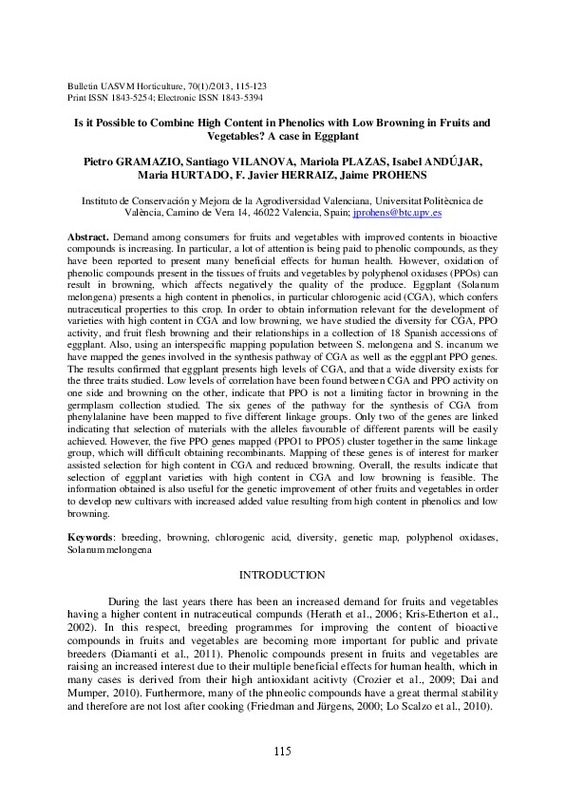JavaScript is disabled for your browser. Some features of this site may not work without it.
Buscar en RiuNet
Listar
Mi cuenta
Estadísticas
Ayuda RiuNet
Admin. UPV
Is it possible to combine high content in phenolics with low browning in fruits and vegetables? A case in eggplant
Mostrar el registro completo del ítem
Gramazio, P.; Vilanova Navarro, S.; Plazas Ávila, MDLO.; Andújar Pérez, I.; Hurtado Ricart, M.; Herraiz García, FJ.; Prohens Tomás, J. (2013). Is it possible to combine high content in phenolics with low browning in fruits and vegetables? A case in eggplant. Bulletin of University of Agricultural Sciences and Veterinary Medicine Cluj-Napoca : Horticulture. 70(1):115-123. http://hdl.handle.net/10251/40285
Por favor, use este identificador para citar o enlazar este ítem: http://hdl.handle.net/10251/40285
Ficheros en el ítem
Metadatos del ítem
| Título: | Is it possible to combine high content in phenolics with low browning in fruits and vegetables? A case in eggplant | |
| Autor: | Andújar Pérez, Isabel Hurtado Ricart, María | |
| Entidad UPV: |
|
|
| Fecha difusión: |
|
|
| Resumen: |
[EN] Demand among consumers for fruits and vegetables with improved contents in bioactive compounds is increasing. In particular, a lot of attention is being paid to phenolic compounds, as they have been reported to present ...[+]
|
|
| Palabras clave: |
|
|
| Derechos de uso: | Reconocimiento (by) | |
| Fuente: |
|
|
| Editorial: |
|
|
| Versión del editor: | http://journals.usamvcluj.ro/index.php/horticulture/article/view/9256 | |
| Tipo: |
|







